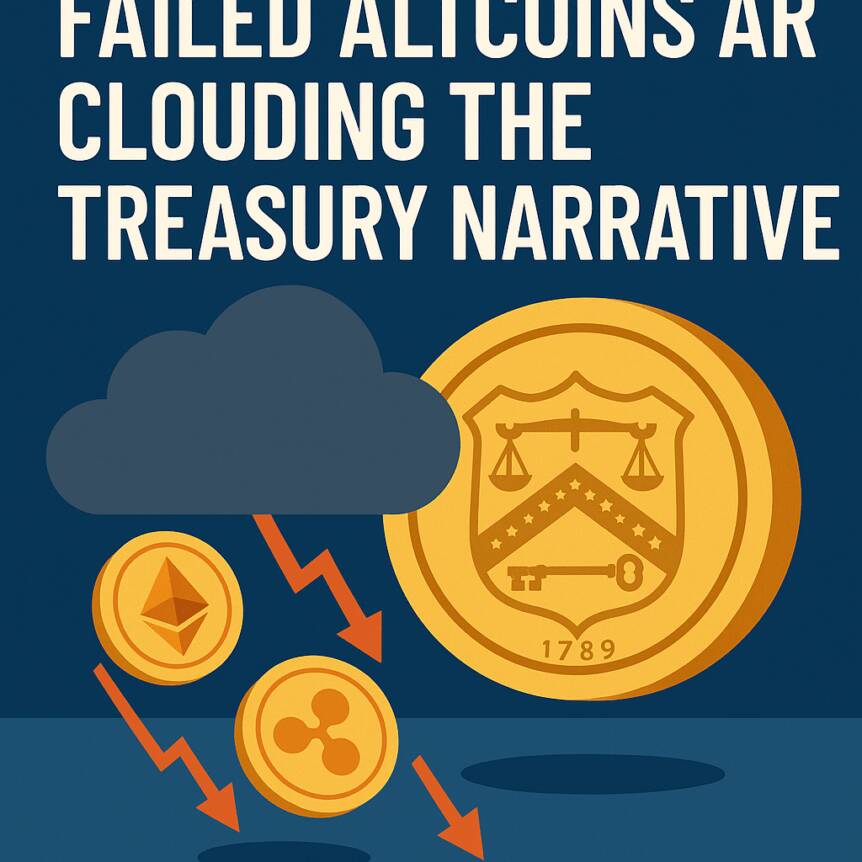David Bailey: Failed Altcoins Are Clouding the Treasury Narrative

Recent discussions within the cryptocurrency community have reignited debates about Bitcoin’s treasury narrative, raising questions about its implications and underlying assumptions. While Bitcoin is often portrayed as a store of value and a hedge against traditional financial systems, some experts caution against oversimplifying its role, especially in the context of digital asset accumulation by institutions and corporations.
Confusion Surrounding Bitcoin’s Treasury Narrative
At the heart of the controversy lies the interpretation of Bitcoin as a treasury reserve asset. Initially popularized by proponents highlighting its decentralized nature and finite supply, the narrative suggests that Bitcoin can serve as a reliable long-term store of value, akin to digital gold. However, critics argue that this perspective overlooks complexities such as market volatility, regulatory uncertainties, and institutional behavior. As more corporations and institutions accumulate Bitcoin, some experts question whether this trend genuinely enhances financial stability or merely shifts risks into the crypto ecosystem.
Historical Context and the Influence of Satoshi Nakamoto
The origin of Bitcoin’s ideology is deeply connected to its mysterious creator, Satoshi Nakamoto. Nakamoto envisioned a peer-to-peer electronic cash system that would operate outside traditional financial institutions. However, over time, Bitcoin’s narrative has evolved, influenced by various factors including market dynamics and institutional adoption. Recent commentary suggests that Nakamoto’s original vision may have become blurred, with current narratives sometimes diverging from the foundational principles of transparency, decentralization, and sovereignty. This evolving story impacts how investors perceive the safety and utility of Bitcoin within the broader landscape of cryptocurrency and blockchain technology.
Implications for the Future of Cryptocurrency and Regulation
The ongoing debates around Bitcoin’s treasury use also have significant implications for the future of crypto regulation. Governments worldwide are scrutinizing how digital assets are incorporated into corporate holdings and national reserves. Clearer regulation could either bolster trust in cryptocurrencies like Bitcoin and Ethereum or impose restrictions that hinder widespread adoption. As DeFi, NFTs, and other blockchain innovations continue to grow, understanding Bitcoin’s role as a treasury asset becomes crucial for policymakers, investors, and developers aiming to navigate the evolving crypto landscape.
Overall, the discussion emphasizes the importance of nuanced understanding and cautious optimism regarding Bitcoin’s place in the financial system. As the industry matures, clarity around the narrative, technical fundamentals, and regulatory environment will be key to shaping its sustainable growth and integration into mainstream finance.
This article was originally published as David Bailey: Failed Altcoins Are Clouding the Treasury Narrative on Crypto Breaking News – your trusted source for crypto news, Bitcoin news, and blockchain updates.
Vous aimerez peut-être aussi

TON Strategy Executes Buybacks and Begins Staking to Generate Onchain Revenue

Shibarium Bridge Hacked: Attacker Drains $2.4M in ETH, SHIB, and BONE Tokens
